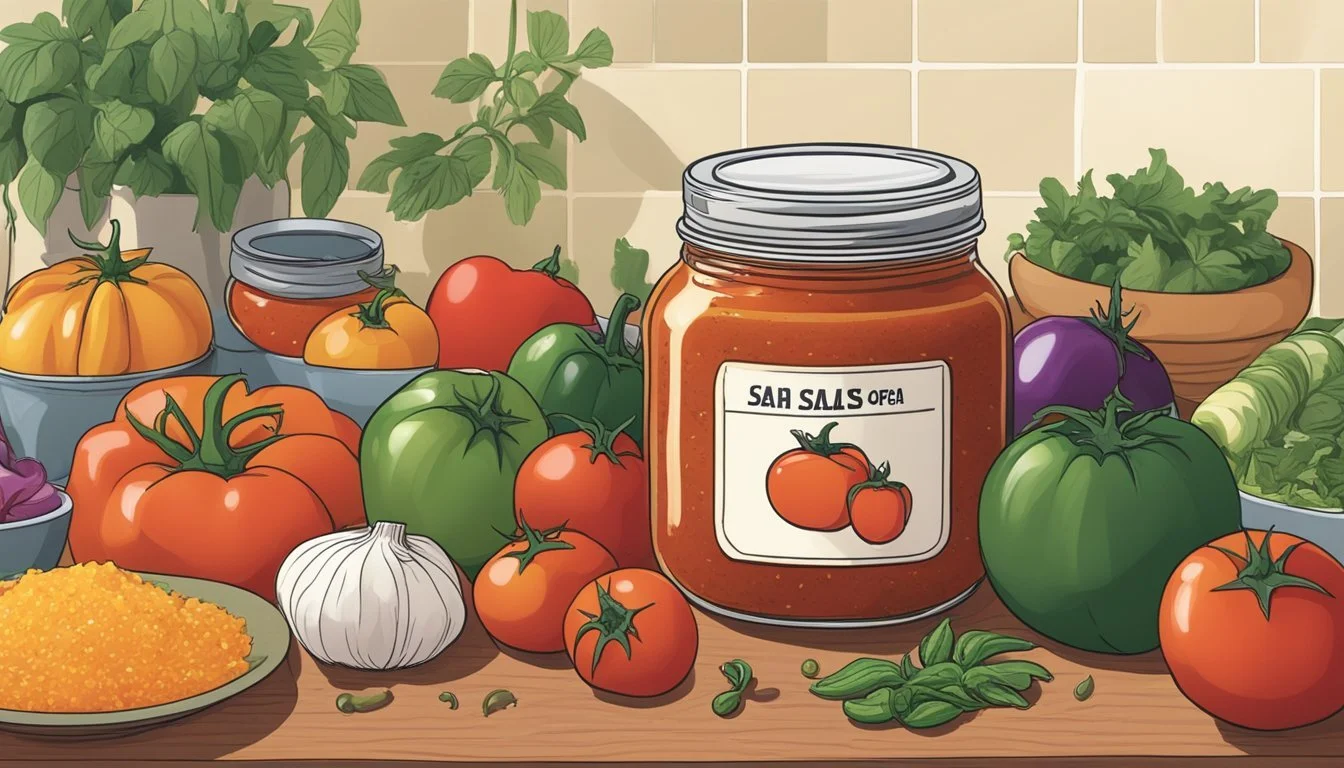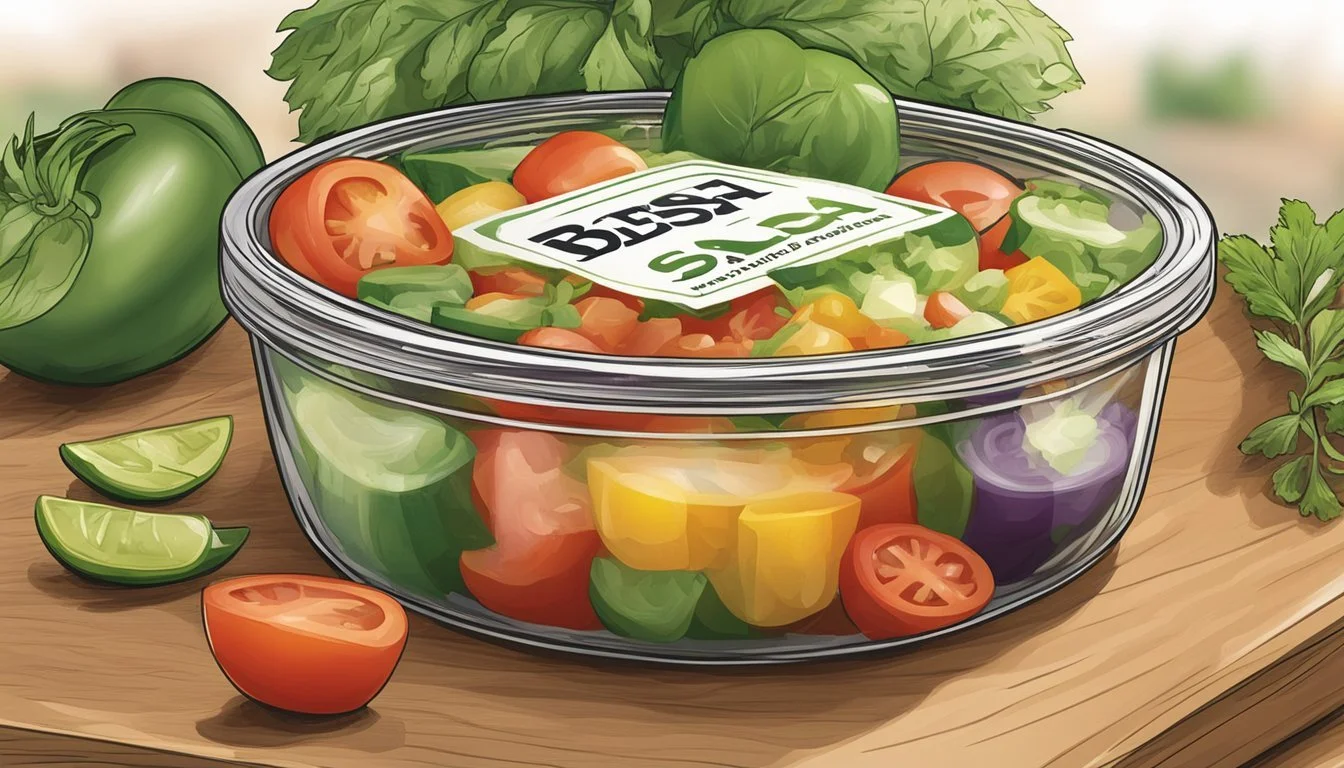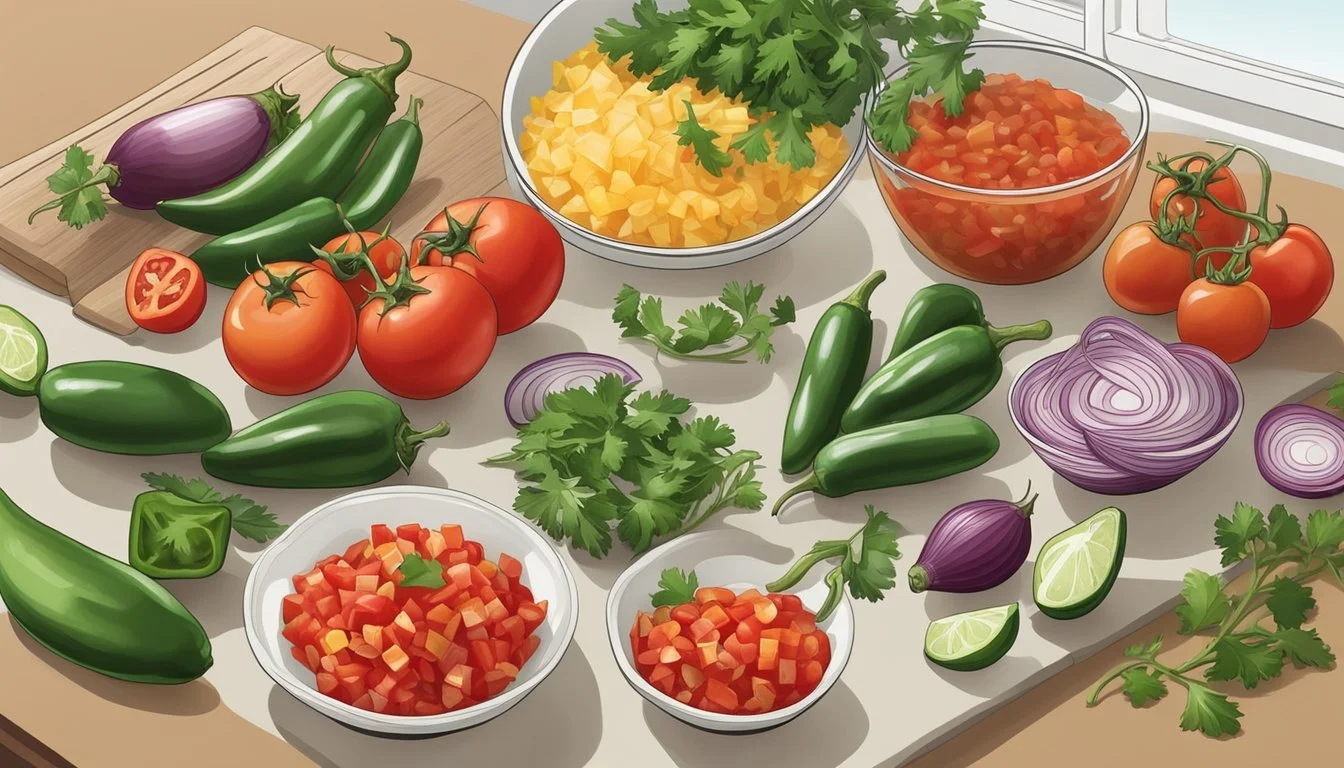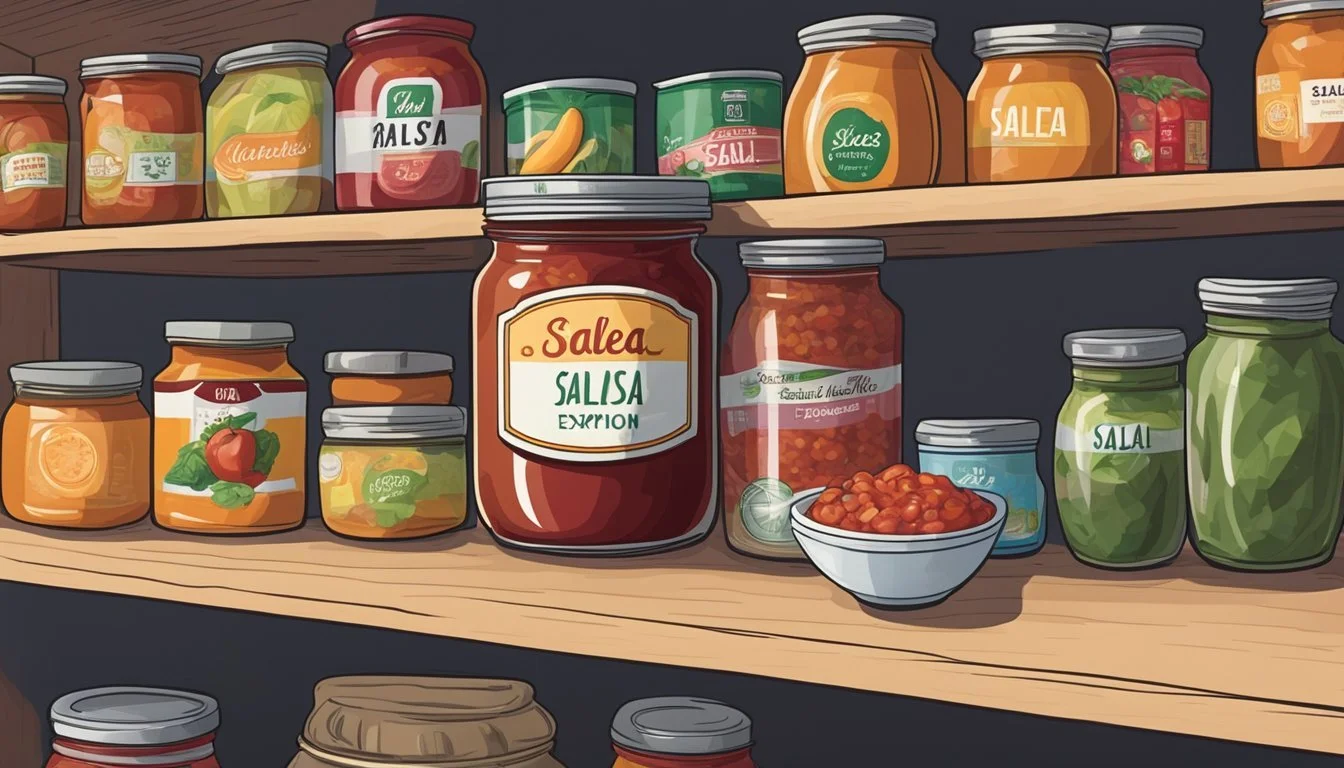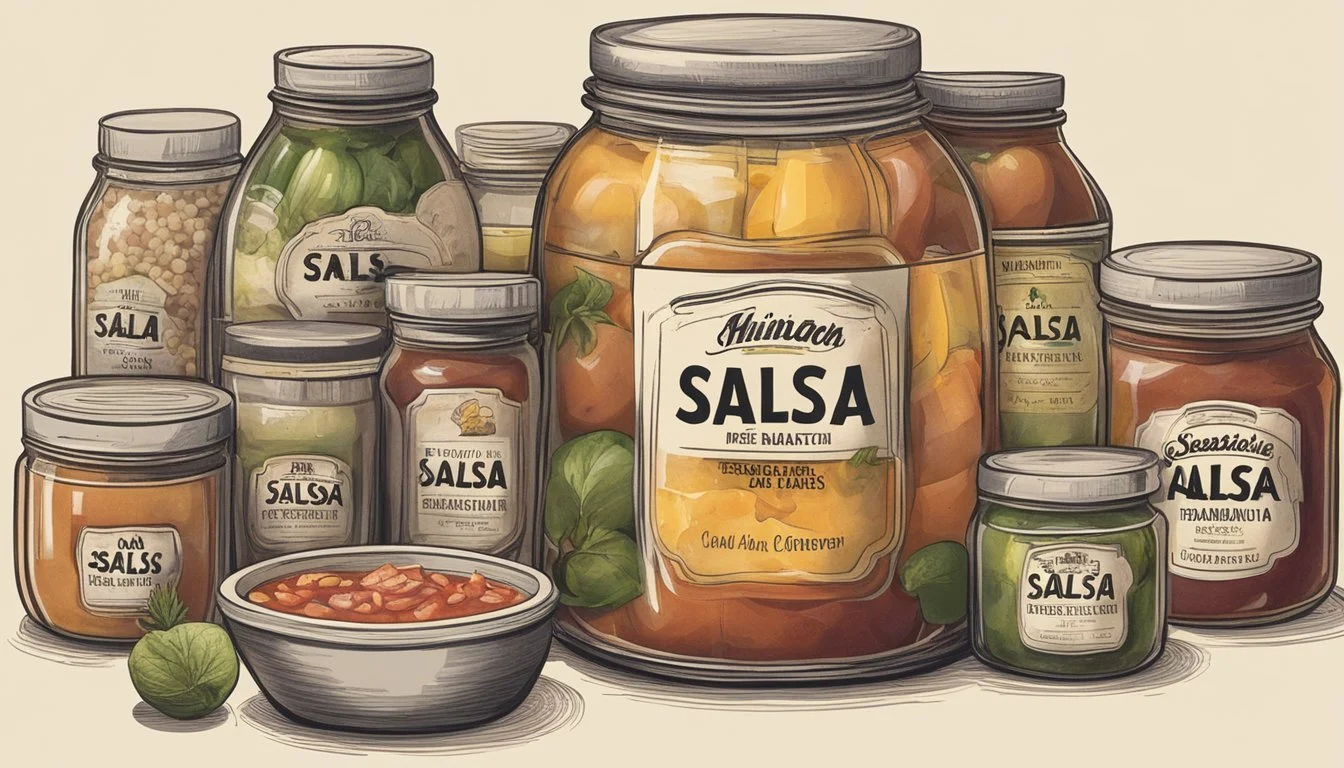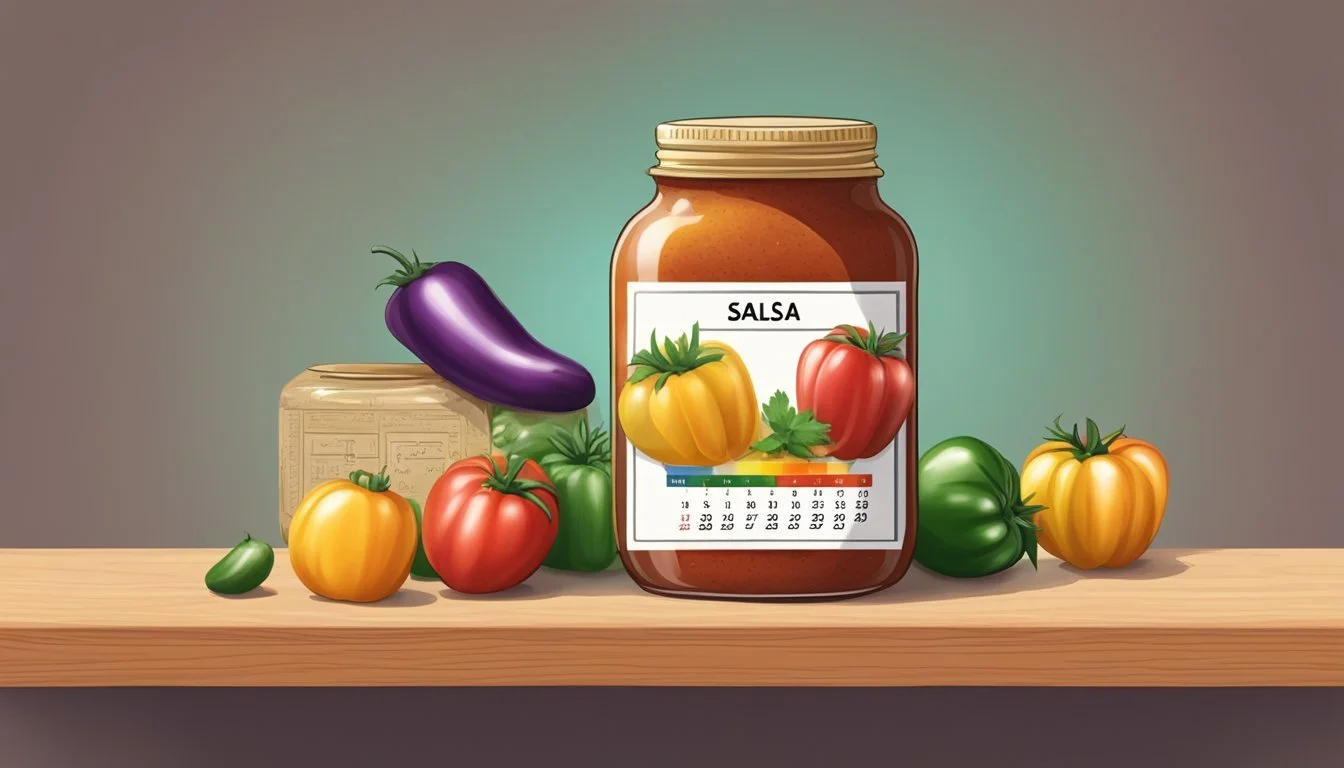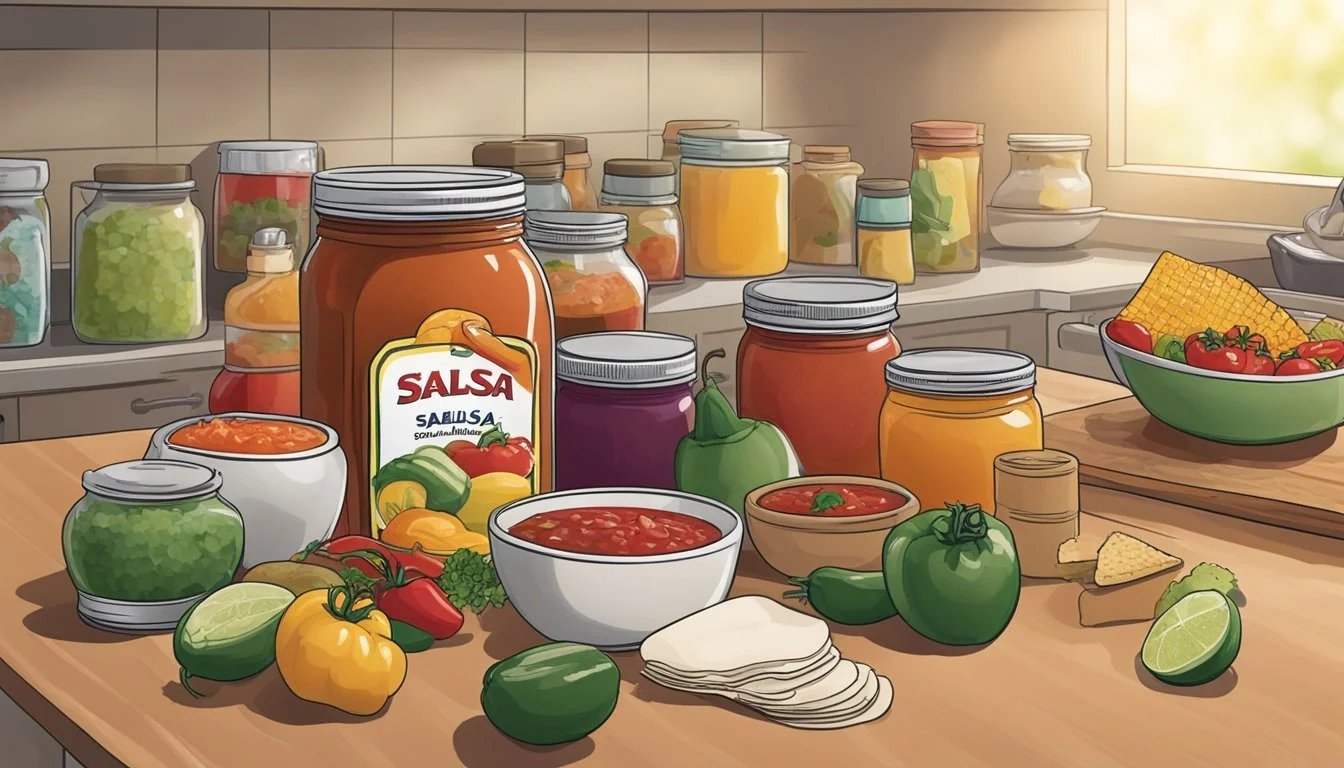Does Salsa Go Bad?
Understanding Shelf Life and Spoilage Signs
Salsa, the vibrant and flavorful condiment, is a staple in many kitchens and dining tables, often accompanying a variety of dishes to add a zesty kick. It comes in many forms, from fresh homemade mixes to a variety of jarred options available at grocery stores. A common question that arises with salsa, as with any food product, is whether it can go bad and how to determine its freshness.
Understanding the shelf life of salsa is crucial for both taste and health reasons. Store-bought salsa often has a longer shelf life due to preservatives and pasteurization processes, typically lasting unopened for up to two years. Once opened, it's advisable to consume it within one month, keeping it refrigerated to maintain its quality and prevent spoilage. Homemade salsa, on the other hand, lacks these preservatives and generally should be eaten within a week of preparation, always being kept refrigerated when not in use.
Factors such as the type of salsa, the ingredients used, and storage conditions play a role in its longevity. Visual cues, changes in smell, and any signs of mold are all indicators that salsa should no longer be consumed. It's important for individuals to assess these aspects to ensure their salsa is enjoyable and safe to eat.
Understanding Salsa
Salsa, a ubiquitous condiment in many kitchens, is revered both for its zest and its ability to complement a myriad of dishes. Its shelf life and freshness depend on various factors including the type of salsa and its ingredients.
Salsa Varieties
Homemade Salsa: Typically lasts between four to six days when refrigerated. Its short lifespan is attributed to the lack of preservatives and the inclusion of fresh ingredients.
Tomatoes: A foundational element that can affect salsa's longevity due to its moisture content.
Onions and Peppers: Common contributors to salsa's flavor profile, also influencing shelf life.
Chilies: The type and amount can alter not just spiciness but also how well the salsa keeps.
Lime Juice: Often used to add tang and can act as a natural preservative.
Store-Bought Salsa: Comes in two primary types, each with different shelf lives.
Refrigerated Salsa: Suggested to be consumed within one month of purchase.
Shelf-Stable Jarred Salsa: Can last 1 to 2 years unopened due to added preservatives.
Key Ingredients
The core ingredients in salsa are crucial not just for taste but also for how it ages.
Tomatoes: Fresh tomatoes cause a shorter shelf life than canned due to higher water content.
Onions: Provide flavor intensity that matures over time.
Peppers and Chilies: Their presence introduces both flavor complexity and variance in acidity, which can influence preservation.
Lime Juice: Offers both a zesty flavor and acts as a conservative, extending salsa's edible period.
Fresh ingredients tend to shorten a salsa's shelf life compared to canned or preserved components common in store-bought options. Understanding these facets of salsa is essential for both safe consumption and optimal enjoyment.
Shelf Life and Spoilage
Salsa's longevity is not indefinite; it can spoil due to various factors, and understanding its shelf life is crucial for safe consumption.
Factors Affecting Salsa Shelf Life
Shelf-stable salsa usually has a longer shelf life, ranging 1 to 2 years unopened due to preservatives and the canning process. After opening, it should be consumed within 1 to 4 weeks and kept refrigerated. Refrigerated salsa, on the other hand, can last up to a month unopened or 1 to 2 weeks after opening. It's important to observe the expiration date on the packaging as a guide. Fresh homemade salsa typically lasts the shortest amount of time, about 4 to 6 days in the fridge.
Visual and Olfactory Signs of Spoilage
Salsa that has gone bad might exhibit a range of visual and olfactory changes. A discoloration or color change can indicate spoilage, turning dull or brownish from its original vibrant red or green. The presence of mold, often visible as fuzzy spots, unequivocally means the salsa should not be consumed. In terms of smell, any off-putting odors or sour smell are clear indicators of spoilage. Salsa's texture may also change, becoming noticeably thicker or developing an unusual separation of ingredients. If any of these signs are evident, the salsa should be discarded to avoid the risks of foodborne illness.
Proper Storage Techniques
Proper storage of salsa is essential to maintain its freshness and prevent spoilage. This involves specific conditions for both unopened and opened containers, tailored to preserve the salsa's quality.
Storing Unopened Salsa
Unopened shelf-stable salsa should be kept in a cool, dry place away from direct sunlight. These storage conditions help prevent degradation of the salsa prior to opening. A pantry or a cupboard away from heat sources is ideal for preserving the salsa's flavor and preventing the growth of bacteria. It's not necessary to refrigerate unopened shelf-stable salsa, as the preservatives within help maintain its longevity.
Storing Opened Salsa
Once salsa is opened, refrigeration is crucial. Opened salsa should be stored in the refrigerator in an airtight container to minimize exposure to air, which can introduce contaminants and lead to quicker spoilage. To store salsa, one should ensure the container is sealed tightly after each use. Freezing salsa is also an option for extending shelf life; it can be stored in freezer-safe containers or bags, ensuring to leave space for expansion. When freezing, removing as much air as possible before sealing can help to preserve the taste and texture for up to six months.
Safety and Consumption
When it comes to salsa, ensuring safety and preventing consumption of spoiled product is crucial. It is important to recognize the signs of expired salsa and understand the health risks associated with spoiled salsa.
Identifying Expired Salsa
Expired salsa typically exhibits discernible changes in color, texture, and smell. Consumers should inspect their salsa closely; any presence of mold or an off-odor—a clear indication that the salsa should not be consumed. Salsa that has separated significantly, leading to an inconsistent texture, may also be past its prime. Here is a quick guide to identifying signs of spoilage:
Visual Inspection:
Color change: Look for dullness or discoloration.
Mold presence: Any fuzzy or spotty growths are a clear warning.
Olfactory Inspection:
Off-odor: A sour or otherwise unpleasant smell is often a giveaway.
Texture Assessment:
Consistency change: Separation or an unexpected viscosity can indicate spoilage.
Health Risks of Spoiled Salsa
Consuming expired salsa can present health risks, including food poisoning from harmful bacteria such as Salmonella or E. coli. Symptoms of food poisoning may include nausea, vomiting, and diarrhea. Ensuring salsa is not spoiled before consumption is essential for consumer safety. Spoiled salsa may harbor bacteria that are not visible to the naked eye, thus relying solely on the senses—while helpful—may not guarantee the safety of the salsa. Always consider the expiration date and storage history when evaluating the risks.
Maximizing Salsa Quality
Proper storage and handling are imperative to ensure that salsa retains its quality for as long as possible. Adhering to best practices for both unopened and previously opened salsa can greatly extend its palatable shelf life and preserve its freshness.
Keeping Salsa Fresh
For Unopened Salsa:
Pantry Storage: An unopened jar of salsa should be kept in a cool, dry pantry. This environment helps maintain quality as it avoids light and heat, which can degrade preservatives and cause spoilage.
Shelf Life: Unopened, salsa can last anywhere from 1 to 2 years as long as the seal remains intact.
For Homemade Salsa:
Refrigeration: After preparation, homemade salsa, lacking industrial preservatives, should be refrigerated immediately. The lack of preservatives means it's more susceptible to spoilage.
Shelf Life: Typically, it lasts between four to six days when kept at a constant refrigeration temperature.
Handling Leftovers
Opened Salsa:
Refrigerate: Once opened, salsa's shelf life decreases. Refrigeration is crucial, and it should be stored in an airtight container.
Freezing: For longer preservation, freezing opened salsa is an option. However, the texture might change upon thawing, so it's more suitable for cooking than fresh consumption.
Expiration: Always observe the expiration date printed on the packaging, even if stored properly, and regularly check for signs of spoilage like off-odors or mold.
For Leftovers:
Thawing: If frozen, leftovers should be thawed in the refrigerator and consumed within a few days.
Usage: Utilizing leftover salsa as an ingredient in cooked dishes can be a way to reduce waste and enhance flavor.
Salsa in Recipes
Salsa, a versatile condiment, plays a pivotal role in the culinary world, functioning both as a key ingredient and as a base for numerous dishes. Its incorporation into recipes can transform the flavor profile, ranging from a subtle tang to a fiery kick.
Salsa as an Ingredient
When salsa is used as an ingredient in recipes, it brings a multi-dimensional flavor of tomatoes, onions, peppers, and spices. Recipes may call for different types of salsa, including fresh homemade salsa, jarred salsa, or even hot sauce, depending on the desired consistency and heat level. For example, a spoonful of salsa can add depth to a soup or enhance the moisture profile in a cooked dish. Additionally, salsa can mix with mayo or other condiments to create a flavorful spread for sandwiches.
Jarred Salsa: Typically used for convenience in recipes due to its longer shelf life.
Hot Sauce: Often added for an extra spicy element.
Homemade Salsa: Preferred for freshness, but with a shorter lifespan.
Salsa-Based Dishes
In terms of salsa-based dishes, the versatility of salsa shines through. Nachos and tacos are classic examples where salsa acts not just as a condiment, but as a central component that brings together the different elements of the dish. A specialized form, like Tostitos Salsa Con Queso, combines salsa with creamy cheese, becoming a ready-made dip with a smooth texture. In the realm of canning, making salsa is a popular option for preserving the fresh flavors of a bountiful harvest, and canned salsa is then used throughout the year as a base in various recipes.
Nachos/Tacos: Salsa is crucial for imparting flavor and texture.
Canning: Preserves salsa for use in offseason recipes.
Tostitos Salsa Con Queso: Blends salsa with cheese for a dip or sauce application in quick snacking scenarios.
Food Storage and Waste Prevention
Proper storage of salsa and the use of preservation techniques are crucial in prolonging its shelf life and preventing waste. Understanding the specifics of how to store different types of salsa can save money and reduce food waste.
Avoiding Food Waste
When dealing with store-bought salsa, especially shelf-stable jarred salsa, consumers can avoid waste by noting the expiration date and storing the jars in a cool, dry place. Once opened, these salsas should be refrigerated and typically consumed within a week to maintain quality and safety. The key to minimizing waste is to purchase quantities that can reasonably be used within this timeframe.
For commercially-jarred salsa, any changes in color, taste, or texture can indicate spoilage, and to prevent waste, one should regularly check their salsa for these signs. Additionally, it's important to always use clean utensils when serving salsa to prevent contamination and extend its shelf life.
Preserving Salsa
The longevity of salsa, particularly homemade varieties, heavily relies on the presence of preserving agents such as vinegar or lime juice. These ingredients can help ward off spoilage by creating a hostile environment for bacteria. Pasteurized products also have a longer shelf life, as the process kills off harmful organisms.
For those looking to preserve their homemade salsa, it should be stored in an airtight container and refrigerated immediately. If one intends to keep their salsa for an extended period, canning is a practical approach, involving heating the salsa to a temperature that eliminates bacteria, then sealing it in sterilized jars. This method can extend the shelf life of unopened shelf-stable salsa well beyond that of its fresh counterparts, often lasting up to two years if the seal remains intact.
The Role of Preservatives in Salsa
Preservatives are vital in extending the shelf life of commercially produced salsas. They work by inhibiting the growth of bacteria, yeasts, and molds, which can cause the product to spoil. The longevity of salsa on the shelf is directly affected by the type and amount of preservatives used.
Vinegar serves as a common preservative in salsa due to its acidic nature, which creates an inhospitable environment for microbial growth. The acidic pH level ensures that salsa retains its intended flavor and quality over an extended period, typically 1 to 2 years for unopened shelf-stable salsa.
Products may also undergo pasteurization, a heat treatment process which destroys pathogenic microorganisms. Pasteurized salsas are less prone to spoilage, contributing significantly to an extended shelf life even after being opened, provided they are stored correctly.
List of Common Preservatives in Salsa:
Vinegar
Citric acid
Calcium chloride
Sodium benzoate
These preservatives are generally recognized as safe when used in the appropriate quantities. They are favored for their effectiveness in ensuring that salsa maintains its safety and taste over time.
Manufacturers must balance the level of preservatives to maintain taste quality while preventing spoilage. Store-bought salsa often contains a combination of these additives to maximize shelf-life, negating the need for immediate refrigeration unlike their homemade counterparts which lack these preserving agents.
Assessing Salsa Quality Over Time
Salsa, whether homemade or store-bought, is subject to quality degradation over time. One should be mindful of the shelf life, which varies across different types. Homemade salsa typically has a lifespan of 4 to 6 days in the refrigerator, while unopened store-bought salsa can last 12-18 months in the pantry. Once opened, jarred salsa is best consumed within 1 to 2 weeks when refrigerated.
The smell of salsa is a reliable indicator; a tangy and fresh aroma is expected. An off-smell suggests spoilage. Consistency changes—a salsa becoming excessively watery or displaying mold growth—are also signs of deterioration.
For taste, any sourness or unpleasant flavor distinct from the original profile suggests it's time to discard the salsa.
When examining salsa, attention to the printed date, namely the expiration or "best by" date, provides guidance, although unopened salsa can remain edible for up to two months beyond this date if stored properly.
A simple table for salsa assessment:
Attribute Homemade Refrigerated Opened Jarred Refrigerated Unopened Shelf-Stable Shelf Life 4-6 days 1-2 weeks 12-18 months Smell Fresh, tangy Fresh, tangy Neutral Consistency Stable, thick May thin over time Stable initially Taste Bold, flavorful Declines with time Consistent until open
Quality is best assessed visually and through the senses. Discard any salsa if it shows signs of mold, has an off smell, an altered taste, or is beyond the estimated shelf life post-opening.
Salsa and Food Hygiene Practices
When handling salsa, one of the vital components of maintaining its freshness and safety is adhering to strict food hygiene practices. Consumers should be aware that the shelf life of salsa can vary greatly depending on its preparation and storage. Fresh homemade salsa typically lasts between four to six days in the refrigerator. In contrast, commercially produced and unopened shelf-stable salsa can last 1-2 years from the production date when stored in a cool, dry place, and once opened, it should be consumed within 7-14 days.
Storage Conditions play a significant role in preserving salsa's quality. Refrigeration is essential once the salsa container is opened. It should be kept in an airtight container to prevent contamination and preserve its flavor. The temperature in the refrigerator should be maintained at or below 40°F (4°C) to prevent the growth of harmful bacteria.
To further ensure food safety, it is essential to avoid double-dipping. This practice can introduce bacteria from the mouth to the salsa, significantly increasing the chance of spoilage or foodborne illness. Instead, portioning out the amount of salsa needed for consumption and using clean utensils for each serving can help maintain the product's integrity.
Below are key points on maintaining salsa hygiene and safety:
Refrigerate promptly: Store salsa in the refrigerator immediately after use.
Tight Sealing: Ensure the container is sealed tightly after opening.
No Double-Dipping: Always use a clean utensil to serve salsa.
Use By Dates: Pay attention to expiration dates and consume accordingly.
Visual Checks: Look for signs of spoilage like mold or an unusual odor before use.
By following these guidelines, individuals can enjoy salsa while minimizing the risk of consuming spoiled or contaminated products.
Salsa Storage FAQ
Salsa, whether store-bought or homemade, has a finite shelf life. Proper storage methods can extend its usability, and understanding the nuances of refrigerating and freezing can be key to maintaining its freshness and flavor.
How to Refrigerate Salsa
When refrigerating salsa, it should be kept in an airtight container to prevent the introduction of bacteria and to keep it from absorbing flavors from other foods in the refrigerator. Store-bought salsa once opened, usually lasts 7-14 days if kept in the fridge at or below 40°F (4°C). Homemade salsa typically has a shorter refrigerator lifespan of 4-6 days. Unopened refrigerated salsa should be consumed by the date printed on the package to ensure freshness.
The Lifespan of Frozen Salsa
Freezing salsa can extend its shelf life considerably. Here’s what one needs to know about freezing salsa:
Freezing: It can be frozen for up to 2 months without significant changes in taste or texture.
Storage: Place the salsa in a freezer-safe bag or container, leaving some room for expansion as it freezes.
Thawing: Thaw frozen salsa in the refrigerator for several hours or overnight. It should never be thawed at room temperature as this can promote bacterial growth.
To return to the original texture, a person may need to drain excess water after thawing or give it a good stir if separation has occurred. It's important to remember that repeated freeze-thaw cycles should be avoided as they can deteriorate the salsa's quality.
Conclusion
Salsa does have a finite shelf life and recognizing when it has gone bad is important for both quality and safety. For store-bought salsa, the "best by" date provides a reliable guideline. Unopened and refrigerated, it can often be safe to consume for a short period past this date. Once opened, it's advised to consume salsa within 5-7 days to ensure its freshness and safety.
Homemade salsa usually contains fewer preservatives, which means it should be eaten sooner, typically within 4-6 days when stored in the refrigerator. Regardless of the type, salsa should always be kept in an airtight container to minimize exposure to contaminants and extend its shelf life.
If salsa begins to change color, separate, or emit an unusual odor, these are strong indicators that it should not be consumed. Here is a quick reference to assess the quality of your salsa:
Visual Inspection: Look for mold or significant changes in color.
Smell Test: A sour or off-putting smell is a clear indication that the salsa is no longer good.
Taste Test: If the visual and smell tests do not yield conclusive results, a small taste can help determine if the salsa has gone bad. Do not ingest if the taste is off.
Always prioritize safety when it comes to consuming perishable items like salsa. When in doubt, it is safer to discard any salsa you suspect has gone bad.


